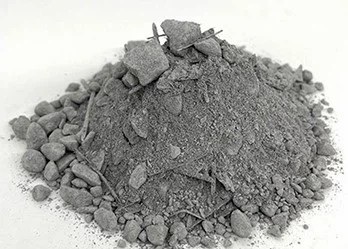PRODUCTS
Steel Fiber Castable
Products Description The steel fiber used to make refractory castables generally has a diameter of 0.4-0.5mm and a length of 25mm. The shape and cross-section of the steel fiber are crescent-shaped. The amount of steel fiber added to the castable is 1-5% (weight), and the length and amount of steel fiber should be appropriate. Generally, water is added to the mixture first, and then steel fiber is added for full stirring. It not only makes the mixture evenly stirred, but also saves 1/3 of the stirring time compared with stirring in the dry material where the steel fiber is placed. The molding c
Composition: Premium materials such as high alumina oxide, magnesium oxide, and silicon carbide, with customizable composition based on client requirements.
Form: Available in powder, brick, board, and castable forms to suit various application needs.
Refractoriness: Standard range from 1200°C to 1800°C, with options for higher temperature customization.
Application Fields: Widely used in industries such as steel, cement, glass, and petrochemicals for furnace lining and insulation.
Packaging: Options include 25 kg bags, bulk bags, and custom packaging solutions compliant with global transportation standards.
Introduction
Our experienced R&D team can customize the material, form, and size according to your specific application needs while ensuring compliance with international quality standards. With rigorous quality control and advanced production facilities, we guarantee products with high refractoriness, excellent compressive strength, and long-lasting durability. Whether you are in the steel, cement, glass, or petrochemical industry, we are your trusted partner, supporting the success of your projects.
For customization inquiries, please feel free to contact us. We will provide tailor-made solutions based on your requirements.
Steel Fiber Castable Details
Products Description
The steel fiber used to make refractory castables generally has a diameter of 0.4-0.5mm and a length of 25mm. The shape and cross-section of the steel fiber are crescent-shaped. The amount of steel fiber added to the castable is 1-5% (weight), and the length and amount of steel fiber should be appropriate.
Generally, water is added to the mixture first, and then steel fiber is added for full stirring. It not only makes the mixture evenly stirred, but also saves 1/3 of the stirring time compared with stirring in the dry material where the steel fiber is placed. The molding can be vibrated externally, or vibrated inside the mixture with a vibrating rod, and dense products can also be obtained.
Features
1.The steel fiber strengthens the tensile and bending strength of the refractory castable.
2. Steel fibers can improve the thermal shock resistance of castables.
3. The steel fiber refractory castable can still carry the load even after cracking, thus improving the fracture work of the castable and increasing the plasticity of the refractory castable.
4. Steel fiber castable can improve the mechanical strength after heat treatment.
Application
1. The lining layer of various thermal equipment.
2. Flue, heat insulation inside large diameter metal chimney.
3. Industrial boiler lining, the effect is more obvious when used on the furnace top.
4. Low-temperature air (≤1200°C) heat insulation in the pipeline.
5. KT-J anti-carburizing fiber castable is used for muffle-free carburizing furnace lining.
6. Various common and special-shaped prefabricated parts can meet the special application requirements of users.

7. The backing insulation layer (including the furnace wall and furnace roof) of various low-temperature furnaces and kilns with an interface temperature of ≤1050°C.
8. For industrial furnaces using flat flame burners, the top of the furnace is sealed and insulated, and the sealing effect is better than any other materials.
9. For the lining of resistance furnace with working temperature ≤1200℃, the electric heating element can be exposed or embedded.
10. There is no mechanical vibration during the work, and it is especially suitable for furnace linings with large temperature changes, such as bell furnaces, movable furnace covers of removable aluminum melting furnaces, etc.













